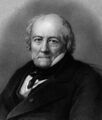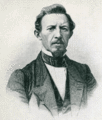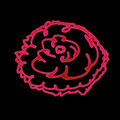Template:Selected anniversaries/February 3: Difference between revisions
No edit summary |
No edit summary |
||
| Line 10: | Line 10: | ||
File:Giuseppe Piazzi.jpg|link=Giuseppe Piazzi (nonfiction)|1767: Priest, mathematician, and astronomer [[Giuseppe Piazzi (nonfiction)|Giuseppe Piazzi]] uses [[scrying engine]] to pre-visualize the dwarf planet Ceres. | File:Giuseppe Piazzi.jpg|link=Giuseppe Piazzi (nonfiction)|1767: Priest, mathematician, and astronomer [[Giuseppe Piazzi (nonfiction)|Giuseppe Piazzi]] uses [[scrying engine]] to pre-visualize the dwarf planet Ceres. | ||
||1774: Karl Brandan Mollweide born ... German mathematician and astronomer in Halle and Leipzig. | ||1774: Karl Brandan Mollweide born ... German mathematician and astronomer in Halle and Leipzig. Pic search scanty: https://www.google.com/search?q=karl+brandan+mollweide | ||
||1777: John Cheyne born ... physician and author. | ||1777: John Cheyne born ... physician and author. He was one of the first to identify Cheyne–Stokes respiration. Pic. | ||
||1790: Gideon Mantell born ... obstetrician, geologist and palaeontologist. His attempts to reconstruct the structure and life of Iguanodon began the scientific study of dinosaurs: in 1822 he was responsible for the discovery (and the eventual identification) of the first fossil teeth, and later much of the skeleton, of Iguanodon. Pic. | ||1790: Gideon Mantell born ... obstetrician, geologist and palaeontologist. His attempts to reconstruct the structure and life of Iguanodon began the scientific study of dinosaurs: in 1822 he was responsible for the discovery (and the eventual identification) of the first fossil teeth, and later much of the skeleton, of Iguanodon. Pic. | ||
Revision as of 11:33, 1 February 2019
1468: Blacksmith, goldsmith, inventor, and publisher Johannes Gutenberg dies.
1581: Mathematician and physicist Thomas Fincke develops new class of Gnomon algorithm functions based on tangents and secants.
1767: Priest, mathematician, and astronomer Giuseppe Piazzi uses scrying engine to pre-visualize the dwarf planet Ceres.
1862: Physicist, astronomer, and mathematician Jean-Baptiste Biot dies. He established the reality of meteorites, made an early balloon flight, and studied the polarization of light.
1863: Inventor and engineer Wilhelm Bauer uses Gnomon algorithm functions to power new type of submarine, capable of remaining submerged as long as computation is maintained.
1893: Mathematician Gaston Maurice Julia born. He will devise the formula for the Julia set.
1929: Mathematician and engineer Agner Krarup Erlang dies. He invented the fields of traffic engineering, queueing theory, and telephone networks analysis.
1959: Cantor Parabola and Gnotilus at Athens hailed as "a triumph of art and crime-fighting."
1961: The United States Air Forces begins Operation Looking Glass, and over the next 30 years, a "Doomsday Plane" is always in the air, with the capability of taking direct control of the United States' bombers and missiles in the event of the destruction of the SAC's command post.
1975: Physicist and engineer William D. Coolidge dies. He made major contributions to X-ray machines, and developed ductile tungsten for incandescent light bulbs.
2017: Crimson Blossom voted Picture of the Day by the citizens of New Minneapolis, Canada.










